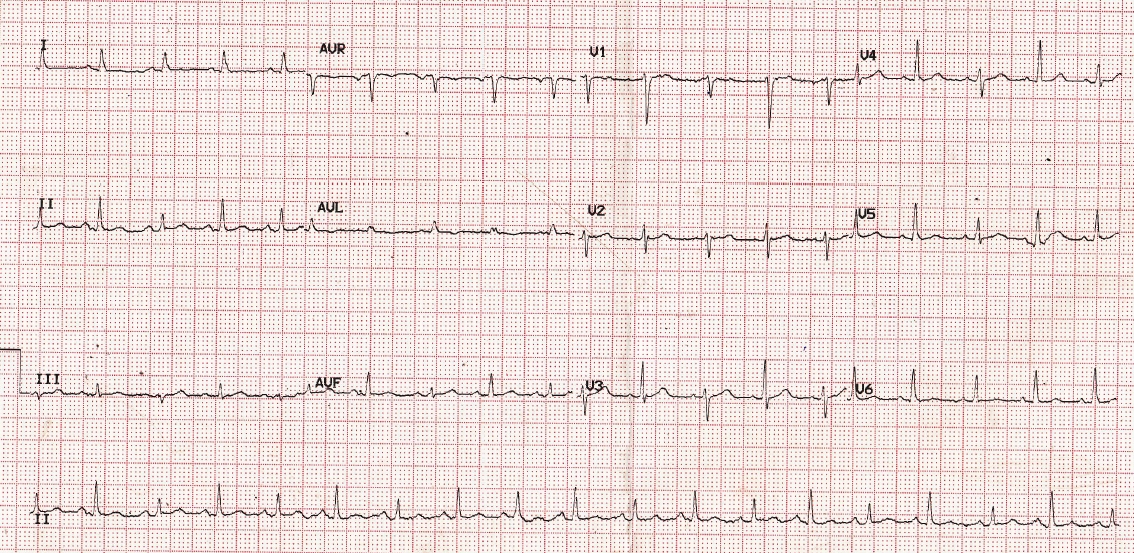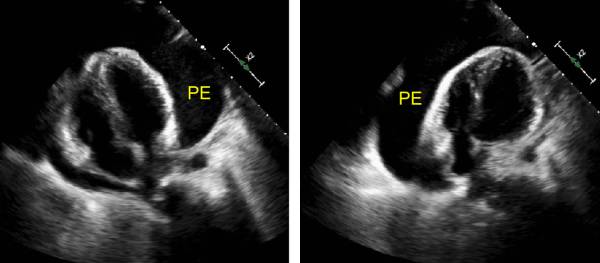Electrical alternans in pericardial effusion
Electrical alternans in pericardial effusion

ECG showing electrical alternans in pericardial effusion
Electrical alternans in pericardial effusion is due to swinging of the heart within the fluid filled pericardial cavity. QRS amplitude is larger when the heart is in the direction of the ECG lead axis and shorter when the heart is away. Low voltage QRS complexes are noted, with standard leads showing less than five millimeters of total QRS amplitude and chest leads showing less than ten millimeters of QRS amplitude. QRS electrical alternans is very evident in lead V1 with alternate QRS complexes being small and larger. Close scrutiny shows similar change in T wave amplitude as well. Alternans in P, QRS and T wave amplitudes is called as electrical alternans totalis or total electrical alternans [1,2], which is considered as diagnostic of large pericardial effusion.
Pericardial effusion – swinging of heart
PE: Pericardial effusion
Sequential frames from two dimensional echocardiography from apical four chamber view shows swinging of the heart to either side so that amount of pericardial fluid on either side varies with time. Such swings will produce electrical alternans on the electrocardiogram. The lead in which it will be more prominent depends on the orientation of the lead axis and the swing axis of the heart in the particular case. The swing will be quite well appreciated in real time echocardiography. This finding is almost always seen in large pericardial effusion with features of cardiac tamponade and needs urgent pericardial aspiration as a life saving procedure [2].
Cineangiogram has also been used to demonstrate that electrical alternans is synchronous with and due to pendulous movement of the heart in the pericardial space [3].
Malignant effusion is the most common cause of cardiac tamponade. Traumatic bleed into the pericardium is another important cause of rapid collection of fluid in the pericardial cavity and cardiac tamponade.
References
- Sotolongo RP, Horton JD. Total electrical alternans in pericardial tamponade. Am Heart J. 1981 Jun;101(6):853-5.
- Verlaan D, Veltman JD, Grady B. Total electrical alternans in a patient with malignant pericardial tamponade. BMJ Case Rep. 2018 Jul 19;2018:bcr2018224771.
- Rinkenberger RL, Polumbo RA, Bolton MR, Dunn M. Mechanism of electrical alternans in patients with pericardial effusion. Cathet Cardiovasc Diagn. 1978;4(1):63-70.


